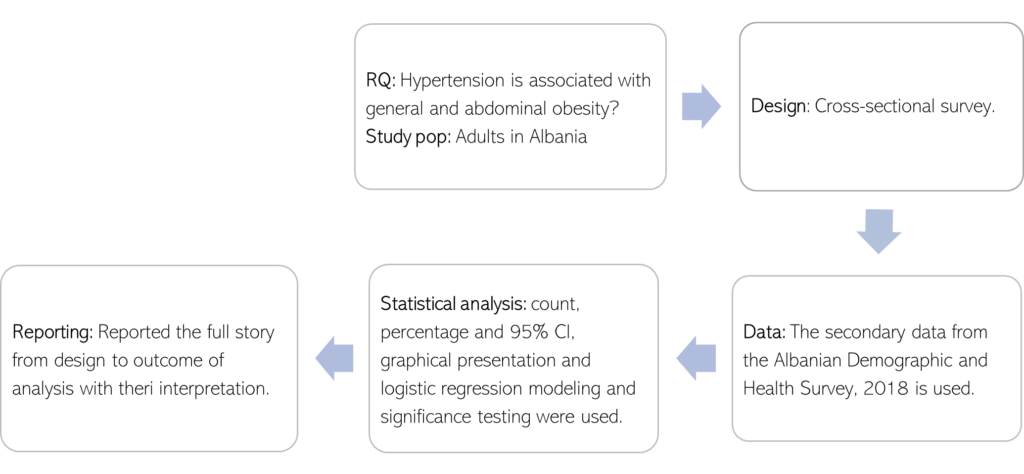While we are talking about research in health it means we have a question in mind, and we want an answer for that following a scientific procedure. The evidence generated through the scientific investigation is then used to inform and influence health care practices. Interestingly, not every research finding influences the practices due to its reliability, validity, generalisability, and strength level. Let us call these attributes reliability, validity, generalisability, and strength of a research findings as “goodness” in research findings. The goodness of a research finding depends on how rigour was the scientific methodology applied to conduct the investigation. There are various aspects of research methodology that need to be monitored to get a reliable, valid, and generalisable evidence. For example, research questions, design, data gathering, data analysis and reporting.
So as a practitioner or policy maker we ask ourselves – how much goodness is there in research finding? In the evidence based medicine (EBM) or evidence based practice (EBP) (there could be other variant of the name) the goodness in evidence is explored.
Let us see first how a scientific investigation goes from the beginning till the end. I have presented an example of my own research article published in the journal Nutrient where we have investigated the association between hypertension and obesity (Islam, Moinuddin, Saqib et al, 2021). The reference of the article can be found at the end of the section.

In this section, we will focus on the design issue and how they impact the goodness especially the strength of research findings. The strength in evidence due to design is arranged in a pyramid shape is called “evidence pyramid” which is nothing but representing the hierarchy of evidence. Selecting the design is not a choice rather to be defined by the research question and objectives.
Research question
A Research question is what we would like to investigate which should be measurable. A good research question is one from which PICO/PECO can be identified.
PICO/PECO
- P – population/patients
- I/E – intervention/ exposure
- C – control/comparator
- O – outcome
In a broad sense, there are three different types of research questions:
- Prevalence/ Incidence study: How many, among 100 people have hypertension in Lancashire? Or how many people in Lancashire developed hypertension in 2021.
- Identifying risk factor(s): Is the obesity associated with hypertension? Or what are the risk factors (determinants) of developing hypertension?
- Measuring the impact/effectiveness: Does eating fresh fruit and salad help reduce hypertension in adults of age 18 or above in Lancashire?
Of course, there could be other types of special research questions such as diagnostic study or ecological study however these three types are most frequent.
The study designs
The study design is a strategy or plan for how we are going to implement the study and measure the study outcome.
- The plan should be as detailed as possible.
- The design needs to be selected before starting the study.
- The design selection depends on the research question.
There are three groups of designs to answer three different types of questions. The groups are presented in Figure 4. The first two groups descriptive and analytical together known as observational studies. So, in broad epidemiological studies are two types: observational and experimental. In observational studies we observe what is happening naturally. For example, if extreme (low or high) temperature and incidence of a disease (let’s say diarrhoea) are associated. So, researcher or epidemiologist cannot expose human or animal to extreme temperature to test the association rather the extreme temperature naturally happens. In experimental study on the other hand, the researcher experiments a new treatment or therapy to cure or prevent a health condition (disease). So, the researcher exposes the human or animal to the treatment to test the effectiveness of that specific treatment in improving the disease condition. The treatment does not need to be a medicine for a disease it can be anything such as an advice, providing information, engaging in physical exercise to improve their health and wellbeing.

- Descriptive studies are suitable to answer the first type (prevalence/ incidence) of research question.
- Analytical studies are applied to investigate the association between the disease and risk factors or identifying the risk factors for a disease.
- The experimental study is used to measure the effectiveness of a treatment or intervention.
The short description of the studies with their strength and limitation can be found (Grimes & Schulz, 2002).
Evidence pyramid
The evidence pyramid is the base of EBM. Unfortunately, there are many versions of the pyramid and disagreement also exists between the experts about the position of a specific design in the pyramid. Among the existing versions, I prefer the pyramid suggested by Murad et al (2016). The suggested pyramids are in Figure 5.

The study design sitting on a higher position is higher in rank in terms of their goodness. That means the evidence generated through the study in a higher position in the pyramid is more reliable, valid, and stronger. As you see in Figure 5 (A), case report or case series reports give the lowest level of evidence. Systematic reviews and meta analysis is positioned on the top of the pyramid meaning that the evidence generated through a systematic review and meta analysis is the strongest one. Practices and policy changes are almost obvious by the evidence generated through a good systematic review and meta analysis. The pyramid in Figure 5 (A) is the most widely accepted and used among epidemiologists and practitioners. It is to be noted that the designs are separated by the straight line. It means the study on a higher rank (let say Cohort study) is uniquely superior to the lower one (Case-control study). Murad et al, (2016) suggested that this is not the case always. Rather the separator line is wavy as in Figure 5 (B). That means the evidence generated through a good quality case-control study can be stronger than the evidence generated though a poor quality cohort study. The authors even went further proposing that the systematic review and meta analysis should not be in the pyramid as this is not a classical study design rather it systematically synthesise the evidences generated through other study designs such as randomised trials, cohort studies etc (see, Figure 5 (C)). I completely agree with their idea, and I even believe one step further. As, the study designs are categorised into three groups based on their objectives so there can be different pyramids for descriptive studies, analytical studies, and experimental studies. I hope to design a pyramid depicting my thoughts on it soon. You may be thinking why it would be better to write a section on study designs or at least provide some descriptions of the designs before presenting the pyramids. I agree with you and hoping to provide the brief description of the study designs in a separate section.
Quiz
is not considered as the goodness of an evidence?
statements are True or False?
patients.
than a systematic review.
References
- Islam, M. R., Moinuddin, M., Saqib, S. M., & Rahman, S. M. (2021). Relationship of anthropometric indicators of general and abdominal obesity with hypertension and their predictive performance among Albanians: a nationwide cross-sectional study. Nutrients, 13(10), 3373.
- Grimes, D. A., & Schulz, K. F. (2002). An overview of clinical research: the lay of the land. The lancet, 359(9300), 57-61.
- Murad, M. H., Asi, N., Alsawas, M., & Alahdab, F. (2016). New evidence pyramid. BMJ Evidence-Based Medicine, 21(4), 125-127.



Fadzai
Clear and really great article providing knowledge on EBM. Cannot wait for your own pyramid honestly as it is true that a good quality case control can have better goodness than a poor quality cohort hence the need to review it. Good luck with it!! Even developed an interest in reading more of these!
Moinuddin Bahezi
Thank you for your appraisal. I hope to publish the new version of pyramid soon.